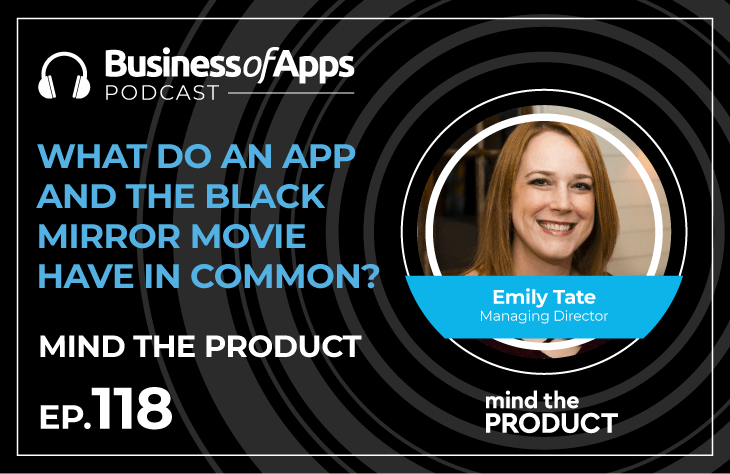
At this very moment, somewhere on the planet app development teams are working on new mobile apps.
Some of them are thinking through features of those apps, others are ready to launch them on an app store, yet other teams are already marketing their apps to acquire users. It’s non-stop and you bet all those teams believe their apps are only capable of bringing good to this world.
Now, did you watch the “Black Mirror” TV series on Netflix? Can you guess the connection between this movie and the app development process? Well, patience – on this episode – among many things – you’ll get the answer 🙂
Today’s Topics Include:
- Emily started her career managing software solutions for airlines before taking her experience to the traveler’s side of the journey as the product manager for a leading travel management app, TripCase. She spent 5 years working on TripCase, where her first major project was to redesign the mobile app from the ground up. Then as the app grew, she worked on wearables, including a launch app for the Apple Watch and two different Samsung Gear watches.
- The app project Emily loved the most
- Challenges of working on apps for wearables
- Mobile apps versus web apps
- Optimism, negligence, and short-sightedness in app development
- What do you do when your app has externalities you didn’t anticipate?
- How do you break through on the app market?
- Android or iOS? iOS
- What features would Emily miss most? City Mapper app to navigate and Apple Pay to pay everywhere
Links and Resources:
Quotes from Emily Tate:
“It’s one of those fun things where you can have a problem that looks similar and the tactic you used to solve it the time before will not work this time.”
“Where was one of the launch app for the Apple Watch when it came out. And it was a really fun project, both from the perspective of obviously getting to play with new shining technology. But really starting from the ground level of figuring out what is the use case for a smartwatch in the context of travel. ”
“Admitting that you’ve made a mistake is step one. And I think we’re so hesitant to do that, you see it all the time.”
Follow the Business Of Apps podcast

